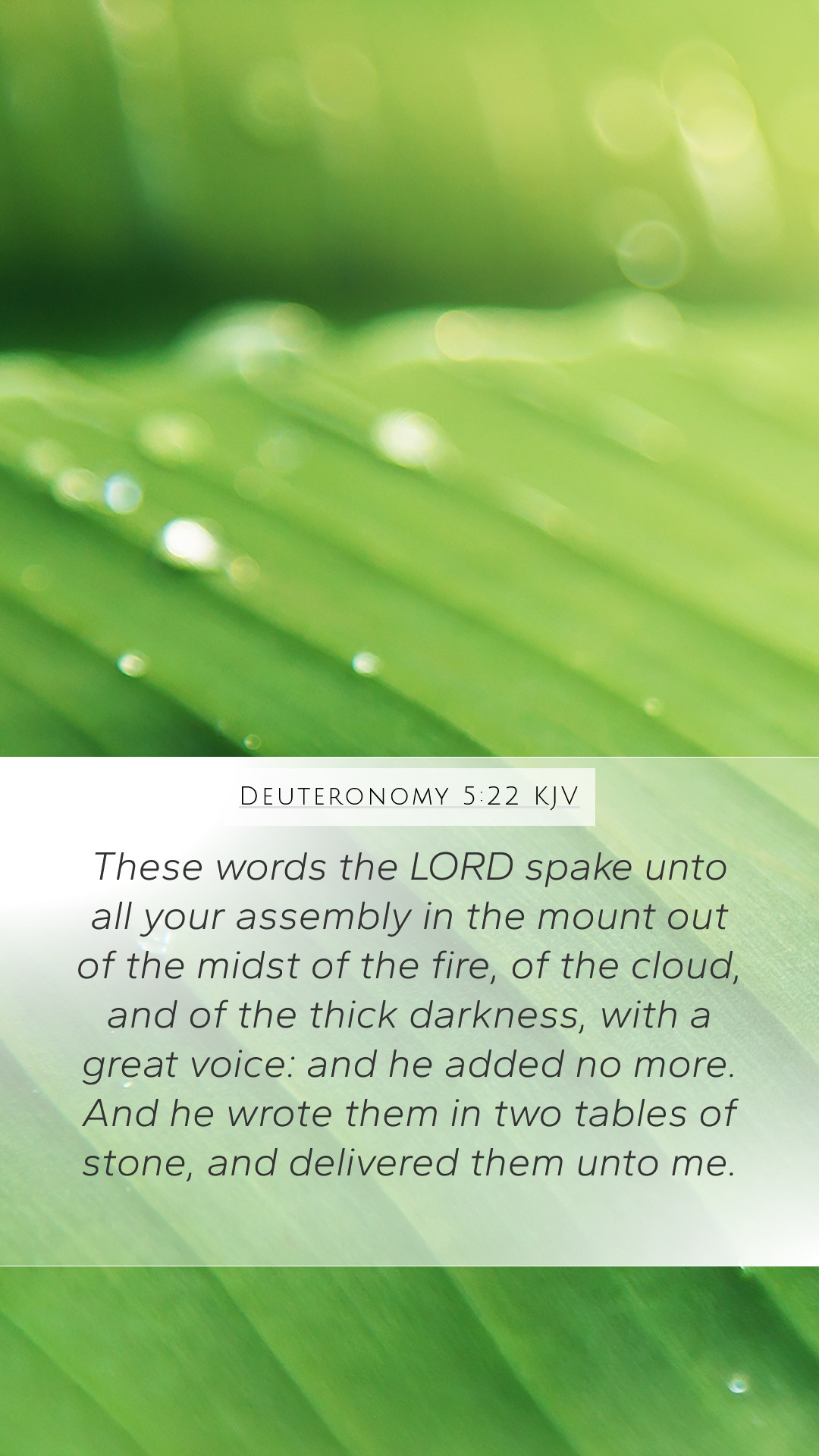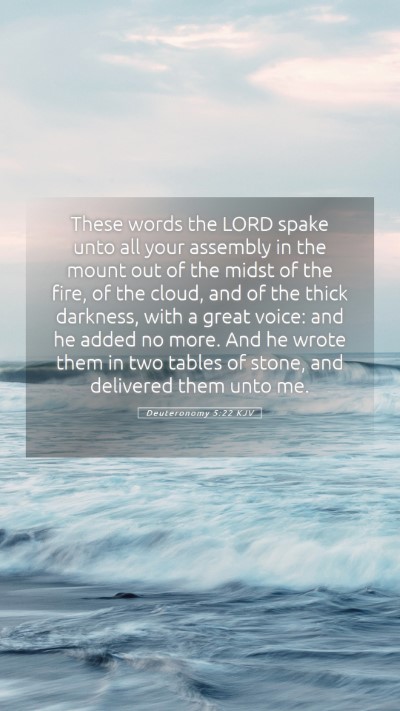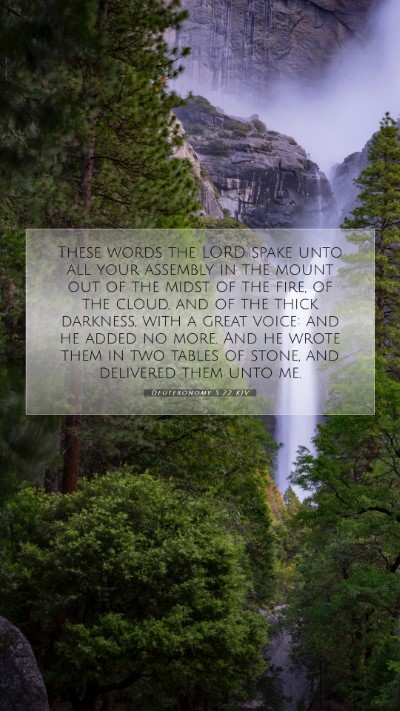Understanding Deuteronomy 5:22
Verse: "These words the LORD spoke to all your assembly at the mountain out of the midst of the fire, the cloud, and the thick darkness, with a loud voice; and He added no more. And He wrote them on two tablets of stone and gave them to me." (Deuteronomy 5:22, ESV)
Introduction
Deuteronomy 5:22 is a pivotal scripture in the Old Testament, encapsulating the divine authority and solemnity of God's commandments. This verse belongs to the section where Moses recounts the Ten Commandments given to the Israelites, emphasizing the unique nature of God's communication with them. The significance of this verse lies in its assertion of God's direct speech and the written form of his covenant with the people.
Verse Commentary and Insights
-
Divine Communication:
According to Matthew Henry's commentary, this verse highlights that God spoke directly to the Israelites, which underscores His willingness to engage with His people intimately. This communication is marked by both order and power, as voiced from the fire and thick darkness.
-
The Significance of Fire and Darkness:
Adam Clarke elaborates on the images of fire and clouds, suggesting they represent God's holiness and majesty, signifying His presence as both comforting and awe-inspiring. This duality teaches the Israelites about the nature of God—both approachable and fearfully majestic.
-
Written Law:
Albert Barnes emphasizes the immense importance of the written law, stated as being inscribed on stone tablets. This fact implies durability and permanence, establishing the moral foundation for the Israelite community that is binding and unchanging.
-
Authority of God's Voice:
Henry also notes that God’s discourse here is final, as He "added no more,” meaning the commandments given are complete and sufficient for guiding the people. This aligns with the theme of divine revelation, reflecting on how Scripture serves as the guide for moral conduct.
-
Unity of the Assembly:
This verse reinforces the collective experience of the Israelite assembly, signifying that the words were directed to all present. This communal aspect is crucial in understanding that God's laws are not just individual mandates but collective covenant obligations.
Historical Context
The backdrop of Deuteronomy is critical in understanding this verse. The Israelites are at the threshold of the Promised Land, and Moses is imparting the laws they are to follow in order to live in a way that pleases God. This moment serves as a reminder of their past experiences in Egypt and their covenantal obligations moving forward.
Application of Deuteronomy 5:22
This verse is significant not only for its historical placement but also for its application in the lives of believers today. It challenges individuals to recognize the authority of God's Word in their lives and the importance of adhering to His commandments. Applying the teachings of this verse involves:
- Respecting Divine Authority: Understanding that God’s words are an ultimate authority in moral and ethical conduct.
- Communal Responsibilities: Acknowledging that following God’s laws is a collective endeavor within the community of believers.
- Faithfulness to God's Commands: Striving to live in a manner consistent with the teachings found in Scripture.
Cross References
- Exodus 20:1-17: The giving of the Ten Commandments at Mount Sinai.
- Deuteronomy 4:12: The people heard God's voice but saw no form.
- Hebrews 12:18-22: A contrast of the mount that could be touched versus the heavenly Jerusalem.
Conclusion
In conclusion, Deuteronomy 5:22 serves as a profound reminder of God's directive and the communicated law that serves as a guide for human behavior. The insights gathered from the commentaries provide a layered understanding showing that this scripture holds both historical significance and continual applicability within the lives of believers today.


